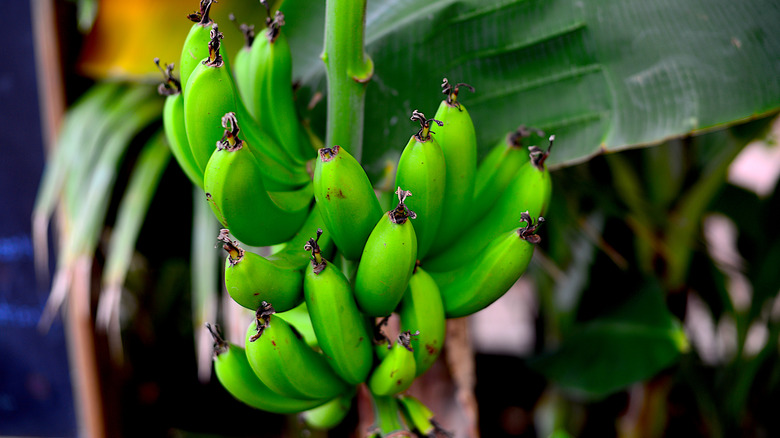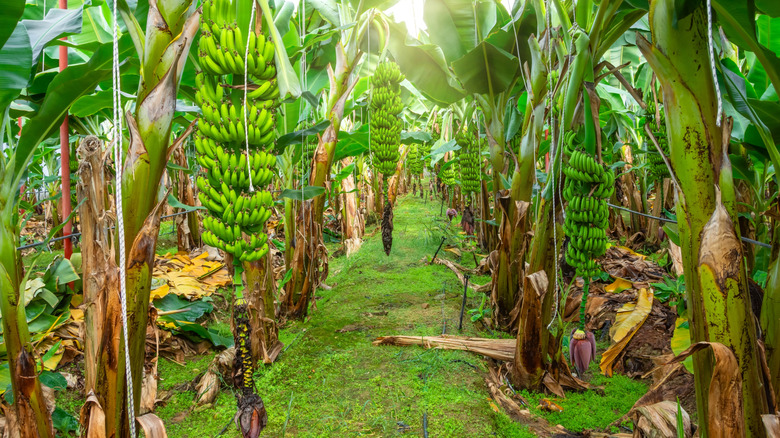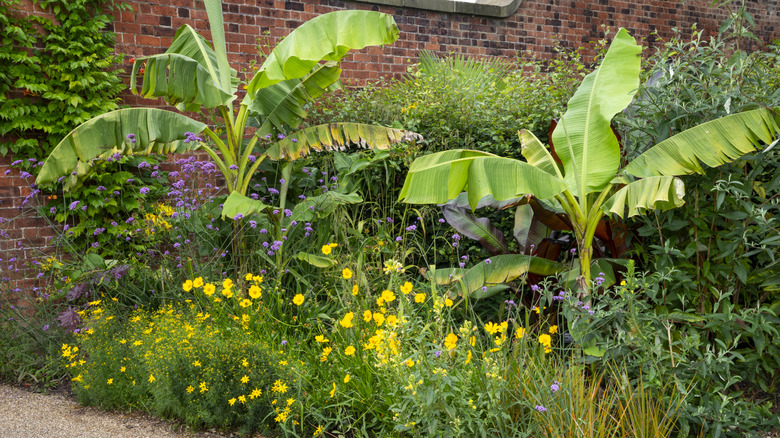How Many Times A Banana Tree Can Produce Bananas
Behold the banana: America's most popular fruit! It's estimated that most people in the U.S. eat roughly 90 bananas a year, and even when we're not eating them whole, we find them in fruit salads, smoothies, cream pies, ice cream treats, sweet banana breads, and fruit bowls everywhere we turn. They're also the butt of many "appealing" jokes. It's easy to see why everybody loves them: Not only are bananas a healthy and delicious snack, but they come in their own natural packaging. And they tend to be very affordable compared to many other fruits.
There are notable perks to bananas on a home garden level, as well. First of all, they come from a fast-growing plant. The time of planting to the fruit bearing stage usually takes less than a year. The large leaves from banana trees also have alternative uses, whether you're using them for mulch and compost materials, or as a cooking ingredient themselves. All of these attributes make bananas a very sustainable food crop.
That said, how long can it last? When will those delicious fruits stop reliably growing from the plant's branches? To understand the answer, we need to learn a little bit about how bananas grow, and that starts by pointing out that these aren't actual "trees" to begin with.
The truth about banana 'trees' and how often they produce fruit
Yes, that's correct. Despite the fact that you'll often hear the term "banana tree," and it arguably looks like a tree, the plant that bananas grow from is not actually a tree. In fact, they are large perennial herbs. Instead of a trunk, they have a wood-like stem that is made up of tightly packed leaf sheaths. Part of this stem stays underground and periodically sends up new trunks, known as "suckers". At about nine months into the plant's growth, a cluster of bananas will grow near the leaf canopy. Interestingly, a cluster of bananas is called a "hand" and each banana a "finger". Lest you thought they were some sort of calling device.
Now, let's tackle the main question. Once this cluster is harvested, that "trunk" of the banana plant will not be able to produce any more bananas. That means each trunk only grows one cluster of fruit and then fruit growth moves to the next stem that one of the suckers produced.
Banana farmers generally prune so that there are three plants growing at a time from the same root system: one in fruiting stage, one at mid-growth, and a very young new stem. So, while it may seem like banana plants are endless banana factories, it's really a clever and orchestrated dance between these related stems. Once a trunk has fruited, it is cut down and used for compost to help the next plants grow. So don't assume that the plant is dead after its fruit is gone — appearances can be deceiving. In reality, these plants can live for years, though they are as sensitive to as temperature as you'd expect a tropical fruit to be.
Growing your own banana fruits in the first place requires the right gardening steps in the right location
Although there are many varieties of banana, the one we most commonly eat is called the Cavendish. Most of them come to the U.S. from Central and South America, where they're grown in tropical climates with consistently high temperatures and plentiful rainfall, sunshine, and humidity. However, they can be grown in tropical and sub-tropical climates in the U.S.
If you live in this type of climate and want to know how to grow bananas, the first thing to know is that bananas don't grow from seed, so you'll need to obtain "suckers" from someone who already grows bananas or from a local nursery. From there, it's best to plant them in the spring. Then, you'll need to water your plants daily and protect them from wind since their trunks and leaves can break easily. Banana plants also require regular fertilization in the form of compost and commercial fertilizers.
Remember to prune the suckers regularly so you only have a few stems growing at a time. You'll know your bananas are ready to harvest when they turn green, at which point they will continue to ripen off the tree. Once plucked, you're ready to enjoy the most a-peel-ing fruit in the country, and with a little extra care, you can continue enjoying the fruits of your labor time after time.


